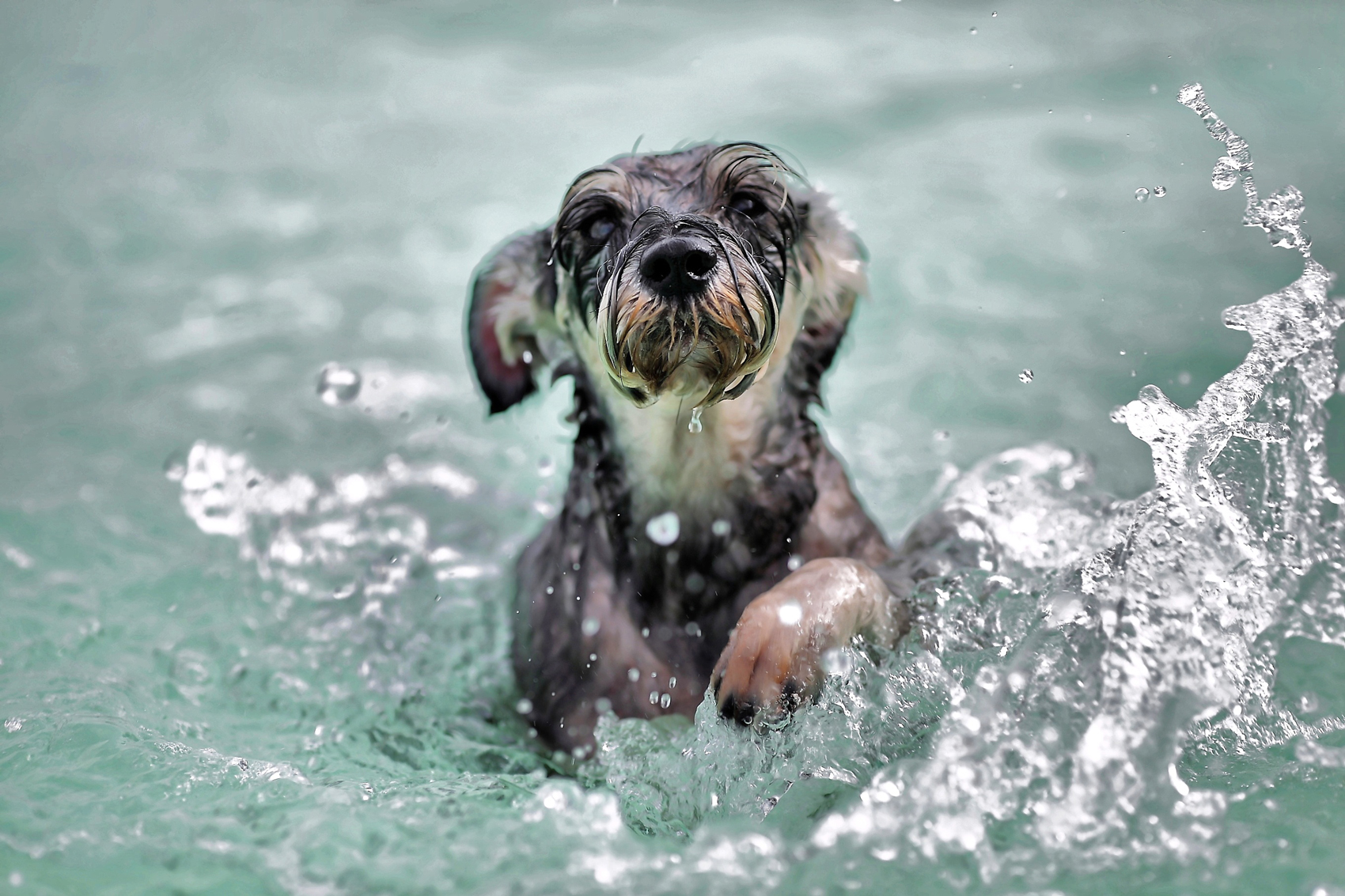
Best training activities for older dogs
15th April, 2021
Is your elderly dog out of breath after climbing stairs? Has it started to become selectively deaf when you order it to ‘sit’? Or is it struggling to adapt to the changes that come with ageing?
If so, it could be time to introduce a few training activities into your routine.
So what new tricks might your old dog need to learn – and what’s the best way of teaching them?
At Petwise, we’re specialists when it comes to providing insurance for senior dogs. So we’ve put together a guide to some of the best ways to keep your spaniel sporty or your akita active in their more mature years.
Remember: as your dog ages, its health needs are likely to increase. Pet insurance for older dogs can help towards your vet fees and any non-routine dental work, helping you keep your pooch in tip-top condition.
Why it’s important to train older dogs
It might be tempting to let your schnauzer snooze away its later years. But your dog will benefit hugely from activities to keep it on its paws.
Exercise is vital for keeping it physically fit. Just as we humans can pile on the pounds as we get older, so too can dogs. That has negative effects on the heart and joints. While older dog insurance can help provide cover for vets’ fees, you want to keep your dog out of the surgery as much as possible.
Learning a few new skills is also a great way to keep your dog mentally alert. Cognitive Dysfunction Syndrome (CDS) is similar to dementia in humans, and your canine might develop the condition as it ages. You may be able to slow the progress of CDS through brain exercises, and re-teach your dog any skills it loses.
Training can also help your dog adapt to new scenarios and realities. As well as the usual life changes, such as house moves, your dog might experience age-related disorders like hearing loss or physical immobility. Through gentle training, you can help it adjust.
If your dog has developed bad habits as it’s got older, training can help you overcome them. Or perhaps you’re rescuing an elderly dog who’s never lived in a home or socialised with other pups before? This is a major undertaking, but not necessarily an impossible one for patient owners.
Safety is another key concern, as senior dogs might get lost if their senses are impaired. Obedience and recall training will help keep them in sight at all times.
And finally, exercise and training activities can be bonding experiences for you and your dog. Your dog looks up to you, its pack leader, and wants your praise. So make your training and exercise sessions fun with lots of treats, and you could be amazed at how eager your dog is to learn in later life!
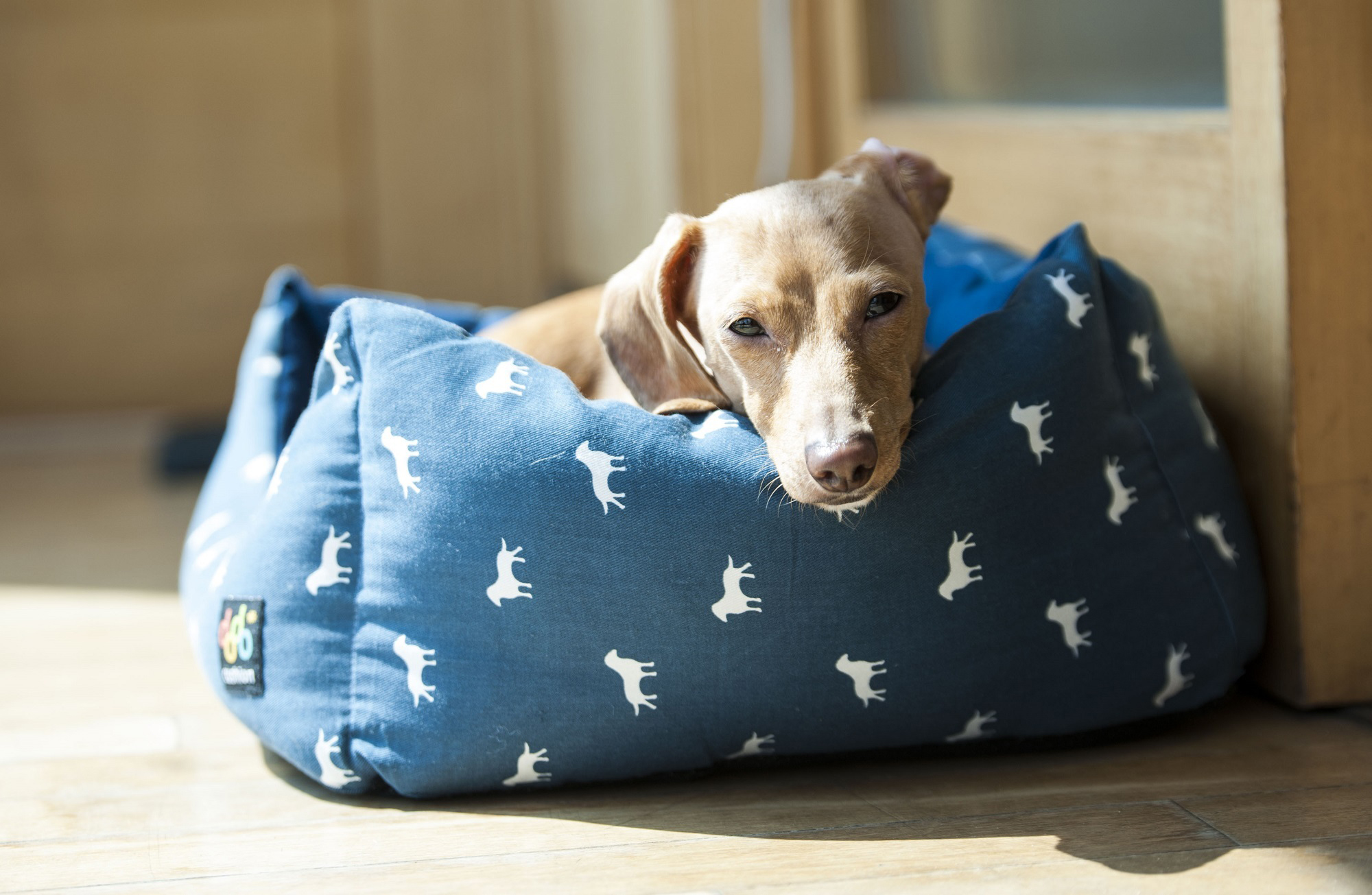
Keep training rewarding
When it comes to training your golden retriever in its golden years, bear the following pointers in mind. Many apply to younger dogs, too.
- Take a rewards-based approach. Never punish your dog for slowness to learn – instead, offer lots of praise and stroking when it gets its new trick right. Positive reinforcement, as often as necessary, is the key to dog training at all ages.
- Join a dog training class. Professional guidance is a great way to get you started or to overcome any difficulties. The moral support of your classmates can be a huge boost too, while your dog will also learn from its fellow four-legged friends.
- Be careful with treats. Food rewards are usually highly effective, but the calories can quickly add up. Elderly dogs have slower metabolisms than puppies and are less likely to burn off the extra pounds through play.
- Be patient. Elderly pooches may well take longer than young pups to pick up new tricks. Adopt a ‘little and often’ approach. By keeping training sessions gentle, you’ll avoid over-exerting your dog, and will keep your mutt keen to learn. Adapt training activities to suit any disabilities or health conditions. If your dog’s got arthritis, for example, carry out activities on soft ground to avoid putting pressure on its joints.
- Take note of the weather, as older dogs might not be able to cope with very high or low temperatures. Buy a dog coat for the winter months if necessary.
If you’re concerned, do contact your vet. With pet insurance for senior dogs from Petwise, you get access to a 24-hour Vet Helpline for any advice and reassurance.
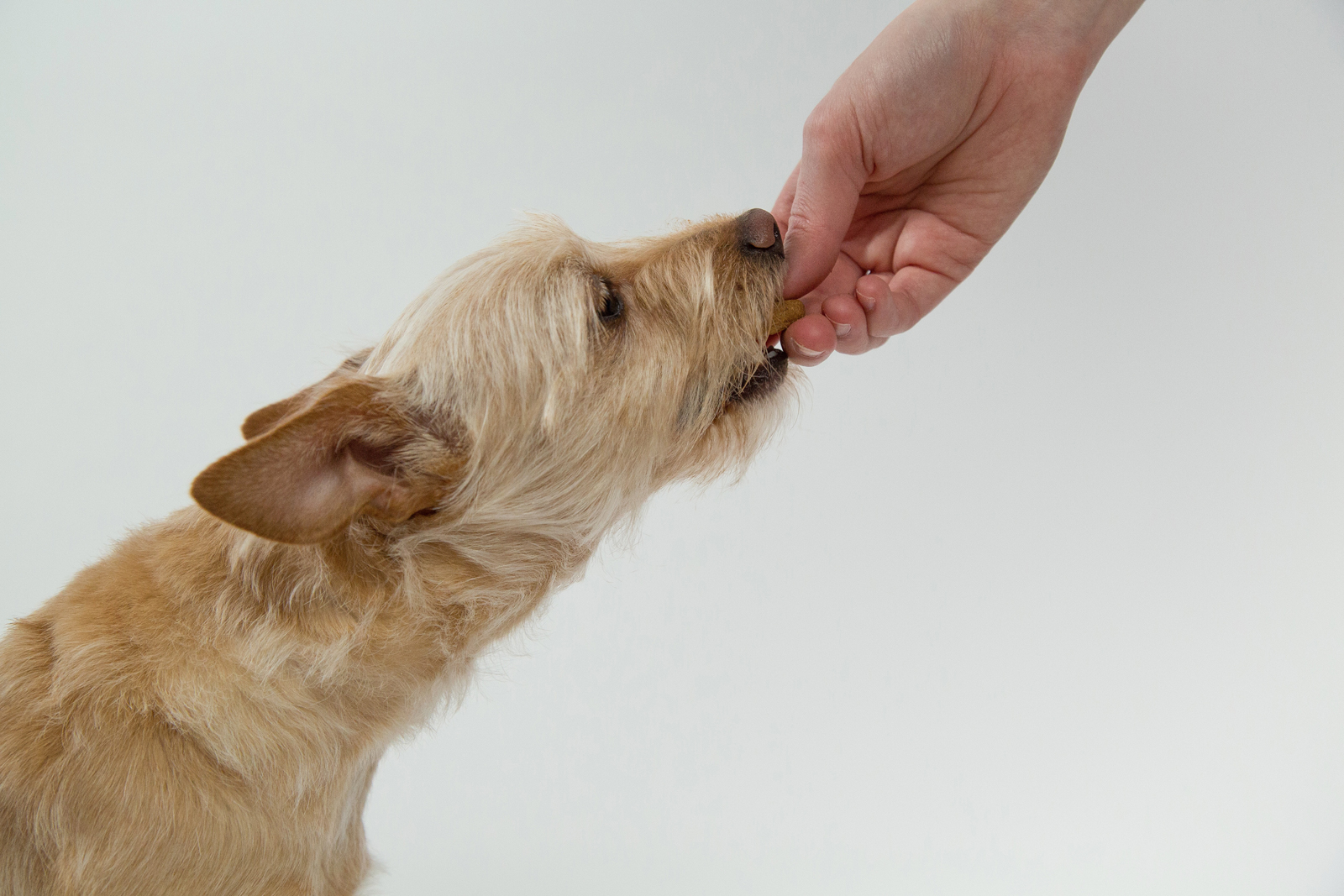
Obedience training: the basic commands
If your elderly dog has never been given basic training, it’s not too late to learn. It’s also a good idea to reinforce earlier lessons if your pooch is developing selective deafness in its mature years!
Start with ‘sit’. Hold a treat in front of your dog, then raise your arm up. This will make your dog’s head rise and its bottom lower – you can give it a gentle push to the ground if necessary. Say ‘sit’, then give the dog its treat.
You’ll need to repeat this several times over a period of time before your dog masters it.
The other three essential commands are ‘stay’, ‘down’ and ‘come’, and the same techniques and principles apply.
For ‘stay’, get your dog to sit. Then hold your hand out in a ‘stop’ signal, and say ‘stay’. Move a step backwards. If your dog stays, reward it with praise and a treat. Keep trying this, taking more steps backwards each time.
For ‘come’, put your dog on a lead, and tug gently while saying the command.
For ‘down’, hold a treat in front of its nose, lower the treat, then slide it across the floor, while saying the command. Your dog should end up in a lying position, which you’ll reward with the treat.
Teaching your dog just these four commands opens up a whole new world of exciting training activities. Other good ones to teach are take, drop, wait, watch, and settle down.
Physical training
Once your dog obeys your commands, you can teach it new tricks. While your greyhound’s racetrack days may be long gone, it will still benefit from stretching its legs and getting its heart pumping.
Do make sure you’re not overdoing it. Dogs are often eager to please their owners, so might try to mask signs of tiredness.
Along with obvious signs such as yawning, panting or lying down, your dog might lose focus, forget basic commands, or start sniffing the ground. Time to take a well-earned rest!
Agility training
You might think this is a sport for younger pooches, who can crawl, clamber and leap to their hearts’ content. But a modified agility training course is a good way to keep a more mature mutt in peak fitness for its age.
So set up a course in your garden with ramps, seesaws, tunnels and hurdles, but keep them low and easy. Use your basic commands to guide your dog gently around the course – and reward it when it succeeds. It’s a fun way to spend time with your limber lurcher!
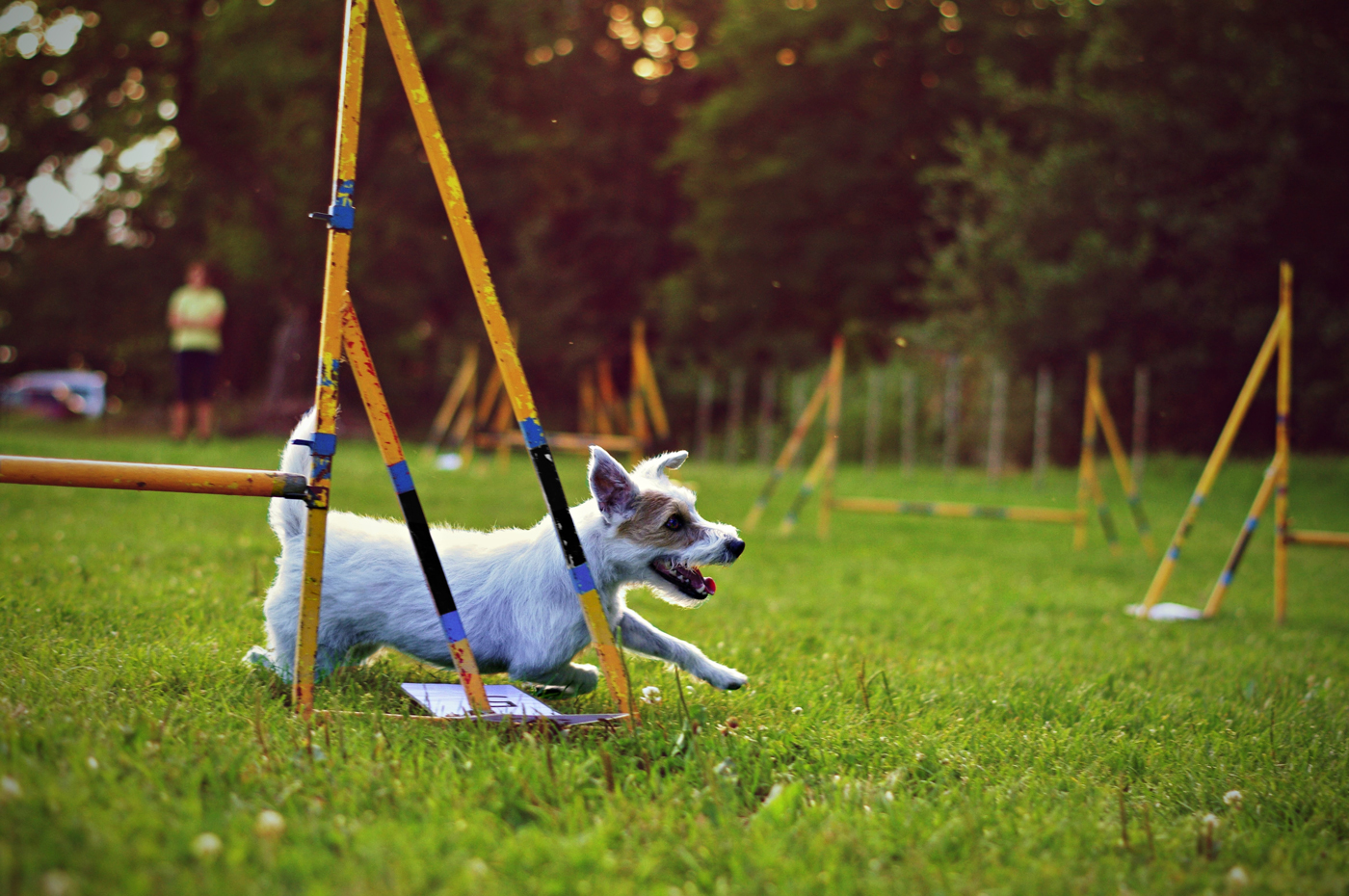
Walking
If your dog is getting on in years, it might be better to stick to the exercise it already loves. Walks – even short ones – give your dog fresh air, the chance to stretch its legs, and plenty of things to sniff.
For dogs that are losing their sight or hearing, keep to familiar routes and places. If your dog is startled, or seems anxious, give it lots of stroking and reassurance.
Mental training
Even if your dog prefers dozing in an armchair to jumping hurdles, you can help keep its brain active through mental training activities.
Remember: dogs learn through play, so keep activities fun and light-hearted at all times.
Scent games
Dogs use their sense of smell to puzzle out the world around them, so love the chance to test their skills. If the scent in question is food-related, so much the better!
One great game involves putting treats into a few of the cups of a muffin tray, then placing tennis balls in all the cups. Your dog has to sniff around and move the balls to get its treats.
Another good puzzle is to get your dog to watch while you place a treat under an overturned cup, then move the cups around. Can it find the treat through a sense of smell alone?
Or try setting a scent trail indoors or outdoors. Put a few drops of essential oil such as lavender on a ball, then play a game of catch, followed by a reward. After several games, perhaps over a few days, hide the ball while your dog is in another room.
Place a trail of lavender-scented pieces of paper leading towards the ball, then bring your dog to the start of your trail and tell it to find the ball. Your dog should soon understand that you want it to find the item that smells like the trail.
You can vary this game by choosing different smells and locations. Once your dog understands the command to find the ball, you can do away with the paper trail.
Puzzle toys
You can also buy puzzle toys to give your elderly pooch mental stimulation. They tend to involve placing treats – or even your dog’s entire meal – in special toys or feeders, which your mutt must puzzle out for itself.
There are all sorts on the market, so choose ones that you think will stretch your dog’s brain but not leave it frustrated – or hungry! Start simple and graduate up as your dog learns the tricks.
Socialising
Never forget the power of the pack! Being around other dogs is stimulating for your elderly pet. So even if your walks are short and sweet, try to give your pet some time playing with its canine friends – or simply observing them from a sunny spot.
Swimming
This is a wonderful low-impact sport that’s easy on the joints and helps your dog build muscle. Try getting your dog to fetch a stick in a river on your next walk – if you’re sure it’s safe to do so.
Or how about finding a canine hydrotherapy pool near you? The warm water is especially soothing for dogs with arthritis. Of course, you can try out basic commands in the pool, too.
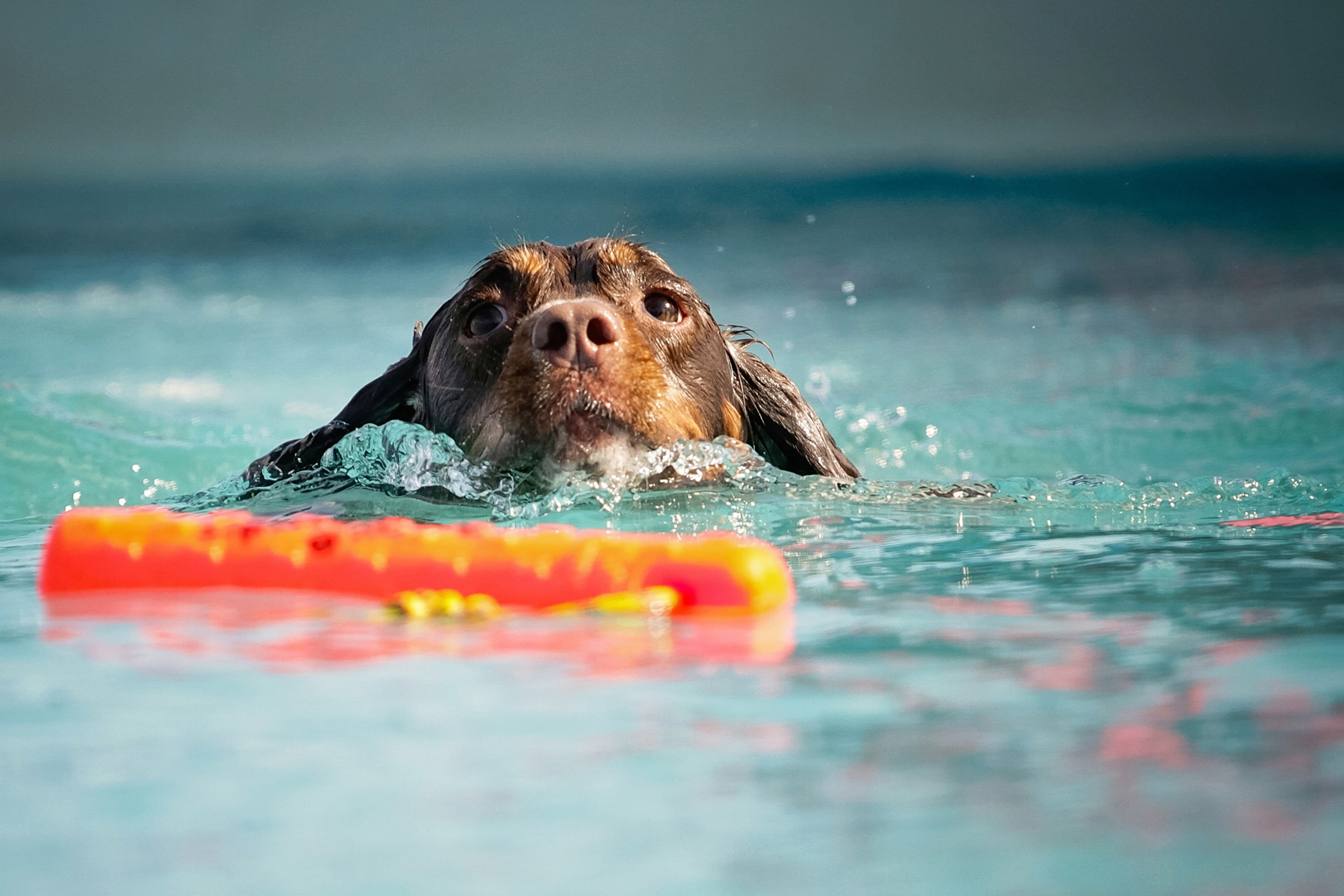
When to see your vet
Of course, training is not a cure-all for your pooch’s problems. There are times when your dog needs to see a vet. Here are a few symptoms that are often overlooked or mistaken.
Arthritis: While older dogs are often stiff when they first wake up, ongoing stiffness or lameness is a problem. There’s no cure, but treatment options include therapy and surgery.
Congestive heart failure: If your dog is often out of breath, it might not be a sign that it needs more exercise, but rather a symptom of heart failure. You could also notice a cough, abdominal swelling, or decreased appetite. Your vet might advise medication, surgery or prescription diets. Senior dog insurance can help with costs.
Kidney failure: Dogs will drink lots of water after exercise. But if you notice yours is drinking more than usual, visit your vet to check for kidney damage.
Injuries: As dogs get less steady on their feet, they’re more liable to fall or stumble. Take care not to overdo any training exercises – keep your sessions short and fun.
Get a quote from Petwise today
At Petwise, we want to keep your four-legged friends as fit as fiddles well into their senior years. That’s why there’s no upper age limit for taking out insurance with us.
We offer four cover levels of pet insurance for older dogs to suit your budget and your canine’s requirements. Dental cover is included as standard on all policies, and there’s a contribution towards specialist senior pet food, too.
If you need to make a claim, our friendly UK-based team will be delighted to help. We can make direct payments to vets, reducing the hassle to you and we will need apply a co-payment excess regardless of the ag of your dog
Finding pet insurance for older dogs is easy with Petwise – get a quick quote today.
Policy benefits, features and discounts offered may very between insurance schemes or cover selected and are subject to underwriting criteria. Information contained within this article is accurate at the time of publishing but may be subject to change.